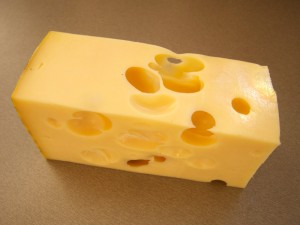Cheese

When archaeologists consider developments in food production, we tend to think first of the shift from hunting and gathering to the domestication of animals or cereal cultivation, both of which allow food resources to be stored and consumed when needed.
Cheese production, however, is now known to date back to at least 7,500 years ago (the 6th millennium BC), suggesting that it too had an important role at this time in some societies. Cheese-making allows milk fats and proteins to be stored and consumed later, and also converts much of the lactose in milk into a form that people without a high level of lactose-tolerance could have consumed without becoming unwell.
Reading
Salque, M., Bogucki, P.I., Pyzel, J., Sobkowiak-Tabaka, I., Grygiel, R., Szmyt, M., Evershed, R.P. 2012 Earliest evidence for cheese making in the sixth millennium BC in northern Europe, Nature 493, 522-525.
Craig, O.E., Chapman, J., Heron, C., Willis, L.H., Bartosiewicz, L., Taylor, G., Whittle, A. and Collins, M. 2005. Did the first farmers of central and eastern Europe produce dairy foods? Antiquity 79, 882–94.

Leave a Reply